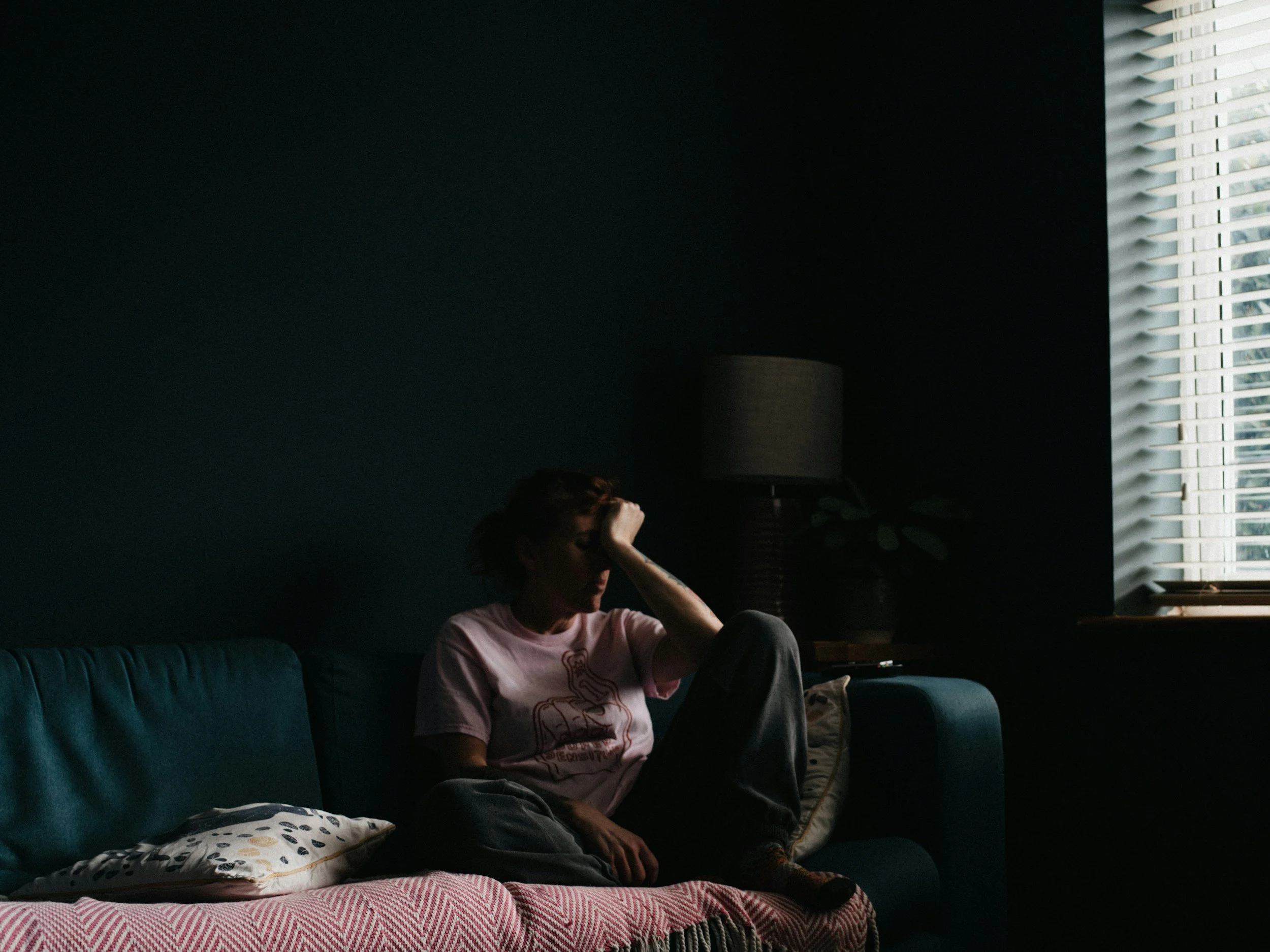When the Seasons Change: Understanding Seasonal Affective Disorder (SAD)
You’ve probably heard someone say, “I always feel down in the winter,” or “When it gets darker earlier, I just don’t want to do anything".” Maybe you’ve even felt it yourself; when the excitement of the holidays isn’t enough to keep that cheerfulness rolling, the days feel shorter, darker, and heavier, and your motivation takes a nosedive. You start to feel off, more tired, less interested, or even just blah for no clear reason.
If this sounds familiar, you’re not alone. What many people call the “winter blues” can actually be a form of depression known as Seasonal Affective Disorder (SAD). While it’s common, it can be tough to recognize, and even harder to explain to others who haven’t felt it. But here’s the thing: feeling this way doesn’t mean you’re lazy, broken, or dramatic. It means your body and mind are responding to real changes in your environment.
At Better Minds Counseling & Services, we help clients recognize these patterns and find ways to care for themselves through each season, especially when the darker months make everything feel a little heavier.
Let’s unpack what Seasonal Affective Disorder is, why it happens, what to look out for, and most importantly, what you can do about it.
What Is Seasonal Affective Disorder?
Seasonal Affective Disorder (often shortened to SAD) is a type of depression that follows a seasonal pattern, most often appearing in the fall and winter months, when there’s less sunlight and shorter days. However, some people experience a spring or summer version of SAD too, though that’s less common.
SAD isn’t just about disliking the cold or missing summer adventures. It’s about how changes in light and daily rhythm can deeply affect your brain chemistry, mood, and energy levels.
Many people start noticing changes in late fall; they might feel more sluggish, crave more carbs, sleep longer, or feel a heavy emotional weight that’s hard to shake. Then, as spring approaches, they start to feel their energy and mood lift again.
Common Symptoms of Seasonal Affective Disorder
While symptoms vary from person to person, SAD often mirrors many signs of major depression, just tied to the rhythm of the seasons. You might notice:
Low mood most days – feeling down, hopeless, or disinterested in things you normally enjoy.
Fatigue or low energy – feeling like you could sleep forever and still wake up tired.
Oversleeping (especially with winter SAD) or trouble sleeping (with summer SAD).
Increased appetite, especially for comfort foods high in carbohydrates or sugar.
Difficulty concentrating or staying motivated.
Withdrawing from others or avoiding social plans.
Loss of interest in hobbies, work, or self-care.
Feeling heavy or slowed down, almost like you’re moving through fog.
If this sounds like you, it’s important to know that SAD isn’t a weakness; it’s a real and treatable condition that affects millions of people each year.
Why Does Seasonal Depression Happen?
Let’s be honest: fall and winter changes everything. The light fades earlier, the cold keeps us indoors, and even our routines start to shift. For many people, those external changes start to cause internal ripples.
Here are some of the main reasons this happens:
Reduced Sunlight Exposure
Sunlight plays a major role in regulating our body’s internal clock (our circadian rhythm). When daylight hours decrease, it can throw off the balance of hormones like melatonin (which affects sleep) and serotonin (which affects mood). Less light means less serotonin, and that can leave you feeling low, sluggish, and foggy.Disrupted Circadian Rhythm
Your body’s “biological clock” is tuned to the cycles of light and dark. When the days get shorter, your rhythm can shift… meaning your body might want to sleep earlier or later, or you may feel out of sync altogether. This can trigger or worsen depressive symptoms.Vitamin D Deficiency
Sunlight is one of the best sources of Vitamin D, which supports your immune system, brain function, and mood. During the winter months, we naturally get less of it, especially if we live in places like Pennsylvania, Delaware, Maryland, New Jersey, or Virginia where the winters are long and cloudy.Isolation and Lifestyle Changes
When it’s cold and dark, we’re less likely to go out, exercise, or engage in things that normally give us joy and connection. Even small shifts, like canceling weekend plans or skipping your morning walk ,can slowly add up and affect your overall emotional wellbeing.
How Seasonal Depression Can Show Up in Real Life
Sometimes it’s easier to recognize SAD in examples rather than symptoms alone. Here are a few scenarios that may sound familiar:
You hit snooze five times and still can’t get yourself out of bed, even though you used to wake up easily for work or your morning coffee run.
You cancel plans more often because “you’re tired,” but really, you just don’t have the energy to socialize.
You scroll endlessly, telling yourself you’re resting, but you notice you’re not feeling recharged, just more numb.
You crave comfort food constantly, and though it feels good for a bit, you start feeling sluggish and foggy afterward.
You seek all the comfort, from wearing oversized sweaters to living in sweatpants.
You find yourself emotional for no clear reason, tearing up over commercials or feeling irritated at small things that didn’t used to bother you.
If this sounds like you, please know: you’re not “being dramatic.” You’re experiencing real changes that deserve attention and care.
Normalizing the Experience
It’s easy to internalize the message that we should “just push through” or “be grateful” when we’re struggling. But the truth is, our emotional health shifts with our environment, and that’s human.
There’s nothing weak or shameful about needing extra support during certain times of the year. Just as we adjust our wardrobe for the seasons, we can also learn to adjust our self-care, therapy, and routines for our emotional seasons.
You wouldn’t blame yourself for catching a cold in January, so why blame yourself for feeling low when the light changes? SAD is common, treatable, and understandable once you know what’s happening beneath the surface.
3 Ways to Help Yourself When SAD Hits
While professional help is often the most effective route, there are things you can do on your own to ease symptoms and feel more grounded through the darker months.
1. Prioritize Light Exposure
Light is one of the most powerful tools against seasonal depression.
Get outside for at least 10–20 minutes a day, especially in the morning. Even cloudy daylight helps regulate your internal clock.
Open your blinds or curtains first thing in the morning to let natural light in.
Try a light therapy lamp (often called a “SAD lamp”). These mimic daylight and can help regulate your mood and sleep cycle.
Consistency is key, try making light exposure part of your daily routine.
2. Create a Gentle Routine
When energy and motivation dip, structure can be a lifeline. Try to:
Stick to regular sleep and wake times.
Move your body, even gently; stretching, yoga, or short walks count.
Schedule small moments of joy: music, cozy reading time, a warm bath, or your favorite show.
Keep up social contact, even if it’s virtual or short.
Think of your routine as an anchor; not to make you “productive,” but to give your mind and body steady signals throughout the day.
3. Nourish Your Body and Mind
Winter can throw off appetite and energy, so focus on gentle, supportive care.
Eat balanced meals with protein, fiber, and healthy fats.
Try adding Vitamin D-rich foods like salmon, eggs, or fortified milk.
Practice mindfulness or gratitude journaling to help ground you when thoughts start to spiral.
And remember: you don’t have to “fix” the feelings, sometimes, just honoring that this season is tough and showing yourself compassion is a big step forward.
5 Ways a Therapist Can Help You Through Seasonal Depression
Therapy can be life-changing when you’re struggling with Seasonal Affective Disorder. At Better Minds Counseling & Services, we approach this type of care with warmth, understanding, and evidence-based strategies that meet you where you are.
Here are five ways therapy can make a real difference:
1. Identifying Patterns and Triggers
A therapist will help you notice the early signs of SAD, those subtle shifts in mood, sleep, or behavior, so you can plan ahead. Recognizing patterns gives you a sense of control and helps you create a prevention plan for each season.
2. Developing Coping Strategies
Using approaches like Cognitive Behavioral Therapy (CBT) or Acceptance and Commitment Therapy (ACT), therapists teach you how to manage negative thoughts, reduce avoidance, and build routines that align with your values, not just your mood.
3. Improving Emotional Regulation
Therapists help you navigate the emotional rollercoaster that comes with seasonal changes. You’ll learn tools to regulate emotions, increase mindfulness, and find healthy outlets for stress, especially during the darker, isolating months.
4. Reconnecting With Joy and Motivation
Depression often numbs motivation and joy. Therapy can help you rebuild those connections; identifying what brings meaning, excitement, or peace, even in the quiet seasons of life. You’ll learn how to take small, sustainable steps toward feeling like yourself again.
5. Creating Accountability and Support
Sometimes, just having a safe space to talk each week can make a world of difference. Your therapist becomes part of your support team, helping you stay consistent with light therapy, self-care routines, or goal-setting when motivation fades.
At Better Minds, we know that mental health doesn’t have an off-season. Our team of specialized therapists provides compassionate, judgment-free support, whether you’re struggling with SAD, depression, anxiety, or burnout.
We offer both individual and group therapy (our DBT group and more) that will help support you during this season.
When to Reach Out for Help
If your mood has been low for more than two weeks, if you’ve lost interest in things that normally bring you joy, or if you feel hopeless about the months ahead, it might be time to reach out. (You also do not have to wait two weeks before reaching out).
You don’t have to wait until things feel unbearable. Therapy isn’t just about crisis care — it’s about prevention, support, and learning new ways to understand yourself. The seasons will keep changing, but that doesn’t mean your mood has to fall with the temperature.
Feeling off as the days grow shorter doesn’t make you weak, it is a very common experience many navigate with help and support.
Your body, your brain, and your emotions are all responding to real changes. The important thing is not to ignore those signals but to care for yourself through them.
At Better Minds Counseling & Services, we specialize in helping individuals navigate depression, anxiety, OCD, and seasonal mood changes. Whether you’re looking to prepare for the winter ahead or find your footing again after months of feeling low, we’re here to help you reconnect with yourself; one step, one season at a time.
You deserve to feel balanced and supported, no matter what the weather looks like outside.
Schedule directly with a therapist of your choice OR contact us and we will get you connected to a therapist that best matches you.


